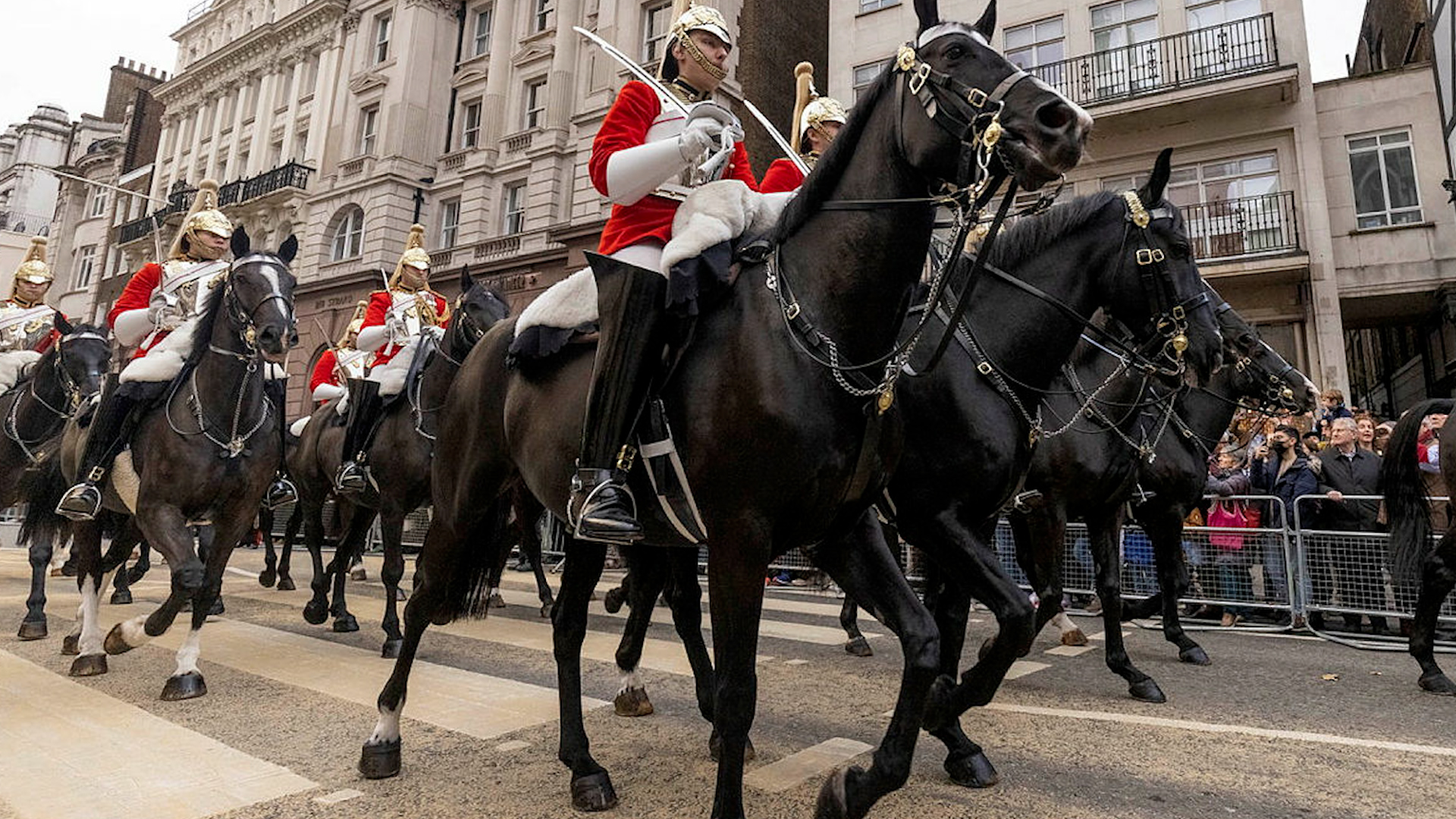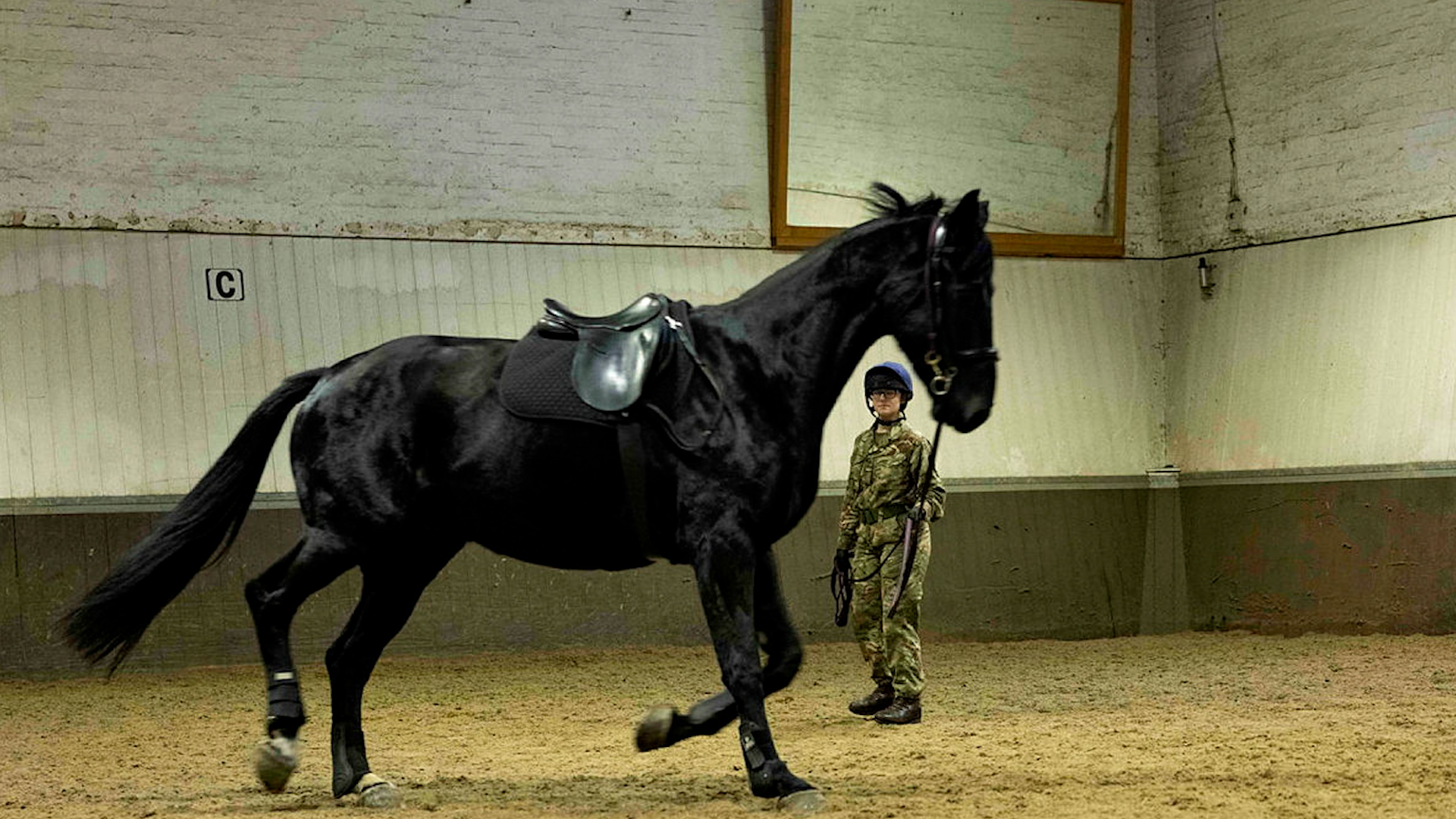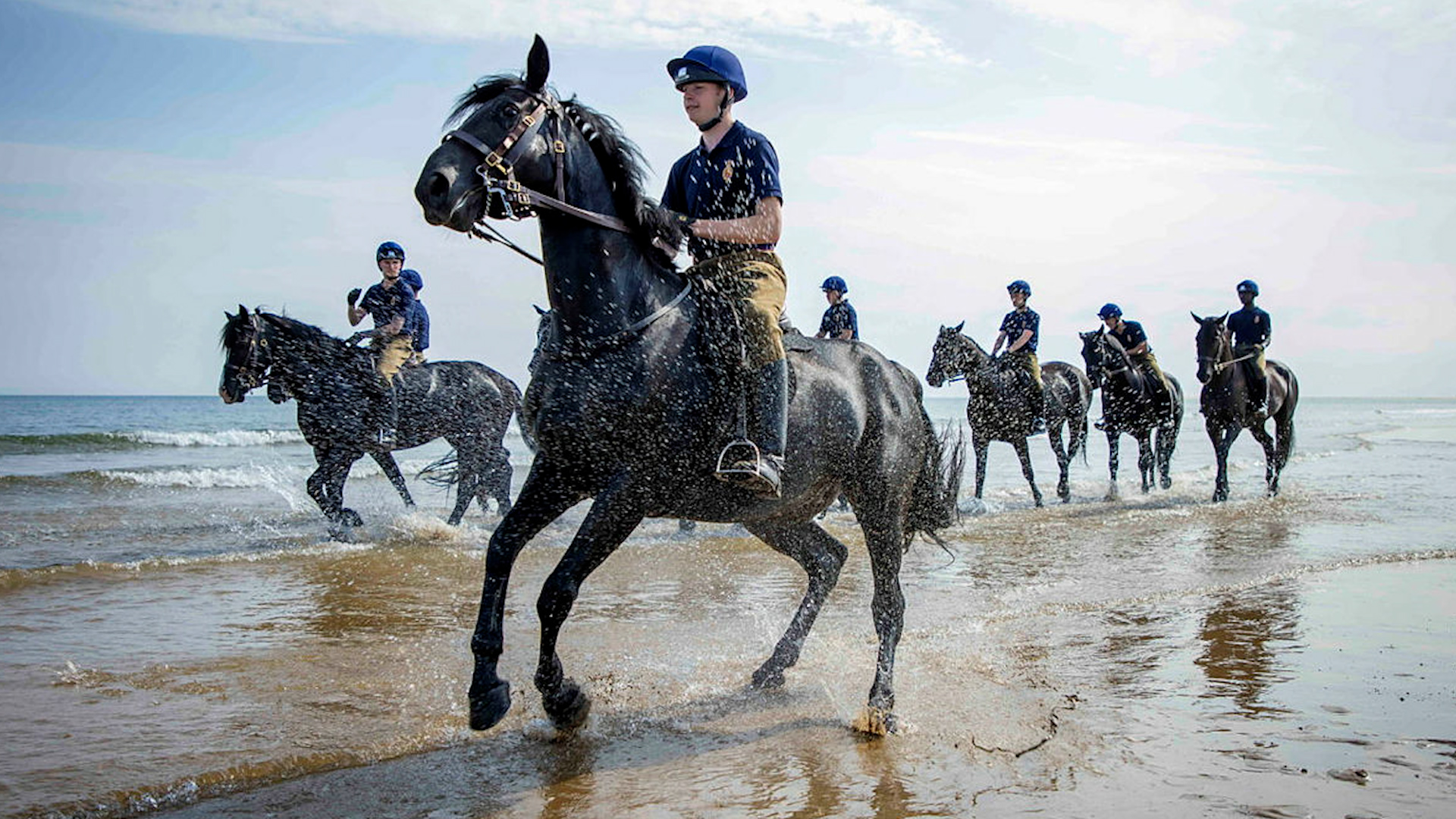
Eleven things to know about Household Cavalry horses on parade

The horses of the Household Cavalry, known as Cavalry Blacks, are a uniquely British institution.
Renowned for their role in ceremonial pomp and display, these horses are always turned out immaculately, endlessly patient and able to handle the large crowds and noise of state events.
Here is all you need to know about these magnificent steeds, from how they are chosen to their task of guarding the King.
1. The term 'Cavalry Blacks' refers to black horses that meet specific height and conformation requirements, rather than a distinct breed.
They are often Irish Draughts or Irish Draught Crosses as they have a balance of strength, athleticism, and temperament suited to ceremonial roles.

2. The horses have been helping to guard the Royal Family and taking part in ceremonial occasions since 1660 when Charles II was restored to the throne.
Historically members of the regiment were required to purchase their own horse and this practice for officers continued up until the Second World War.
3. A ceremonial horse must be capable of carrying a soldier weighing about 13 stone (83kg), plus about four stone (25kg) of kit, for long periods of time.
4. Cavalry Blacks are normally geldings (castrated male horses) and need to be at least 16hh (168-172 cm), but are often bigger – stallions are never used.

5. The horses are often named after battles or significant places, with each new intake of a year called names that begin with the same letter. On joining the Household Cavalry, a regimental number is stamped on a horse's hooves.
6. Most horses are purchased when they are three or four and are selected by the Riding Master, who is responsible for overseeing their training, preferably choosing horses that are unbroken.
7. Each horse is trained for between eight to 10 months at the Household Cavalry Training Wing in Windsor and Hyde Park Barracks in London, which involves the horses being regularly ridden on the streets of the capital to desensitize them to loud noises and heavy traffic.
In addition, special training is given for the horses to be used to noises, like the gun salutes and regimental bands, and they need to be comfortable in a procession, with noises coming from behind them.

8. Most Household Cavalry Mounted Regiment soldiers have never ridden a horse before and their training takes around seven months, first learning in the full khaki uniform, before finally riding in their full ceremonial kit.
9. Where possible before a big event, like the coronation, a horse will be linked to a specific soldierso they have time to build a strong bond of trust which will help the horse feel calm on the day. However, as trained mounted dutymen, the men and women of the regiment can be called on to ride any horse in the regiment.
The horses are also given mini PT sessions just before a big occasion to loosen off their muscles.

10. During the summer the horses travel to Norfolk as part of their annual Regimental Training Camp and, while in the county, are treated to a special day out at the seaside, with a beach run through the waves at Holkham Beach.
There is also always a Regimental Open Day too for the public to meet the horses and find out more about the regiment.
11. The average age of retirement for regimental horses is about 17 or 18, but a few make it well into their 20s – with some horses ending up living out their days with The Horse Trust.









